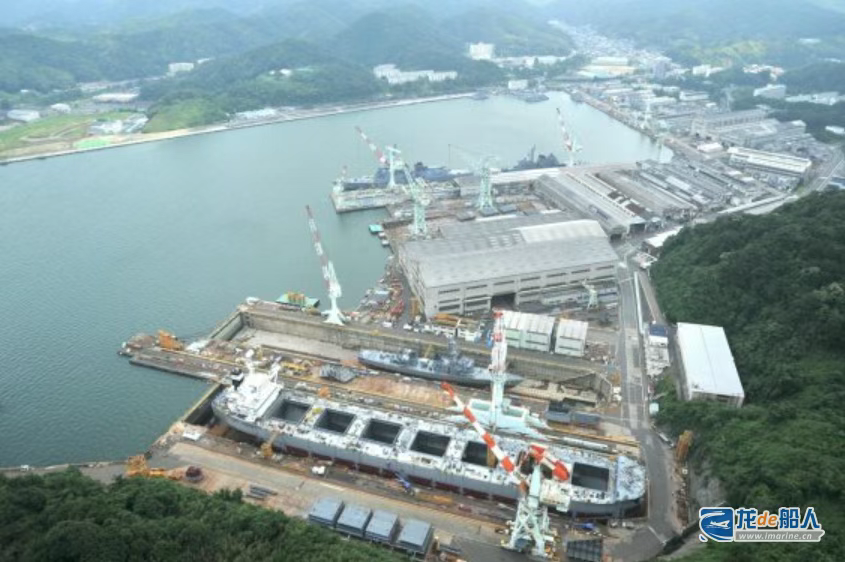Amid the shipbuilding boom caused by the surge in global demand for ships, Japan’s shipbuilding industry has failed to benefit from this round of prosperity. Restricted by the capacity of shipyards, Japan’s exports of ships in April fell by more than 30% year-on-year. Japanese insiders say the country’s shipbuilding industry is facing a serious crisis.

According to data released by the Japan Ship Exporters’ Association on the 16th, Japanese shipbuilders secured only approximately 620,000 gross tons (GT) in export ship orders in April this year, a decrease of about 32% compared to around 920,000 GT in the same period last year. As of the end of April, Japanese shipbuilders’ order book stood at 29.5 million GT, equivalent to approximately 3.7 years of workload. The Japanese shipbuilding industry explained that many new orders were missed due to Japanese shipyards’ delivery schedules being fully booked for the next few years.
Japanese industry insiders believe that although the proportion of exported ships has declined, Japanese shipbuilders are gaining competitive advantages in high value-added fields such as environmentally friendly ships, and the demand for commercial ships has also expanded in response to environmental regulations and the growing logistics needs of emerging economies. For example, Japan Marine United (JMU), a major Japanese shipbuilder, achieved a 5.4-fold year-on-year increase in net profit in fiscal year 2024 (March 2024 to March 2025), reaching 19.9 billion yen (about $137 million), a historical high. Its total order volume hit 720.2 billion yen (about $4.962 billion), also a record high.
Japanese marine engine giant Mitsui E&S also said its ship propulsion system orders rose 1.4 times year-on-year to 212.9 billion yen (about $1.481 billion).
Although the performance of Japanese shipbuilding enterprises is acceptable, the Japanese industry is generally worried about the serious lack of production capacity of shipyards. A Japanese shipbuilding industry insider said: “Global shipbuilding demand is strong, but Japanese shipyards cannot meet the demand. Capacity constraints are a key factor hindering the future development of the shipbuilding industry.”
Nikkei Asia reports that the global shipbuilding market has been rapidly reshaping. As of 2023, Chinese shipbuilders dominate the global newbuilding market with 48.9%, South Korea with 28.5%, and Japan with 15.6%. Among global new orders in 2024, China is leading with a 69% share, followed by South Korea with a 15% share, while Japan declines significantly with only 7%.
Japan, as a maritime country with low energy and food self-sufficiency, has a shipbuilding industry that is directly linked to national security issues. Although the shipbuilding technology of Japanese shipbuilders is still competitive, due to the past series of shipbuilders’ closure and reorganization and capacity reduction, Japanese shipbuilders have not enjoyed the fruits of victory of the new shipbuilding boom.
In order to solve the difficulties of the shipbuilding industry, the Japanese industry is looking for a turnaround opportunity. In April this year, Mitsui E&S sold its commercial ship design and development company to Tsuneishi Shipbuilding to implement a selection and focus strategy. At the same time, Mitsui E&S is also accelerating the joint development of the next generation of environmentally friendly ships, such as ammonia fuel ships, which are environmentally friendly ships that do not produce carbon dioxide emissions. In addition, Japanese shipowners are committed to becoming the world’s number one environmentally friendly shipping company with the policy support of the Japanese government.
In addition to pursuing a survival strategy by ensuring technological competitiveness, the Japanese government is trying to use the country’s shipbuilding technology as a diplomatic card in tariff negotiations with the United States, expressing its willingness to provide technical support and ship repair capabilities. If US-Japan shipbuilding cooperation becomes a reality through technical cooperation and providing ship maintenance capabilities, it will be in line with the development strategy of the Japanese shipbuilding industry.


